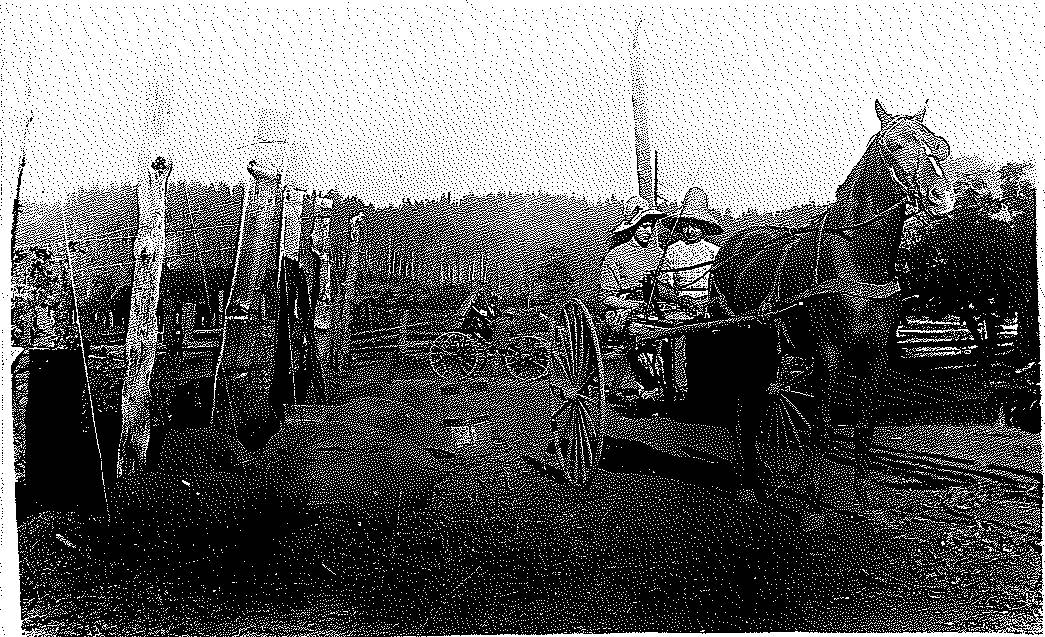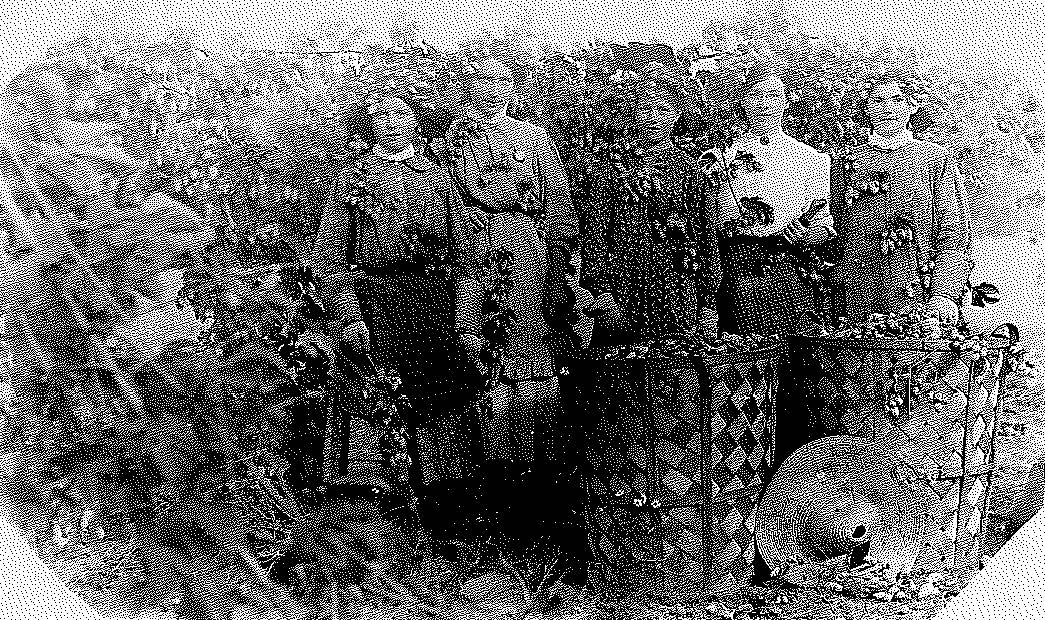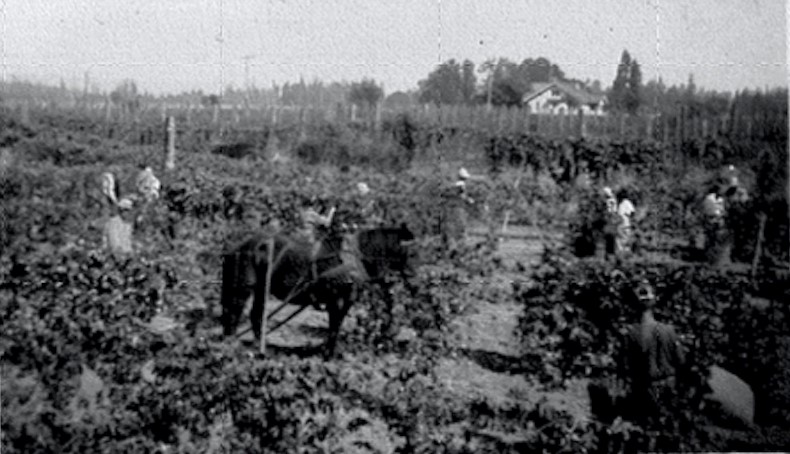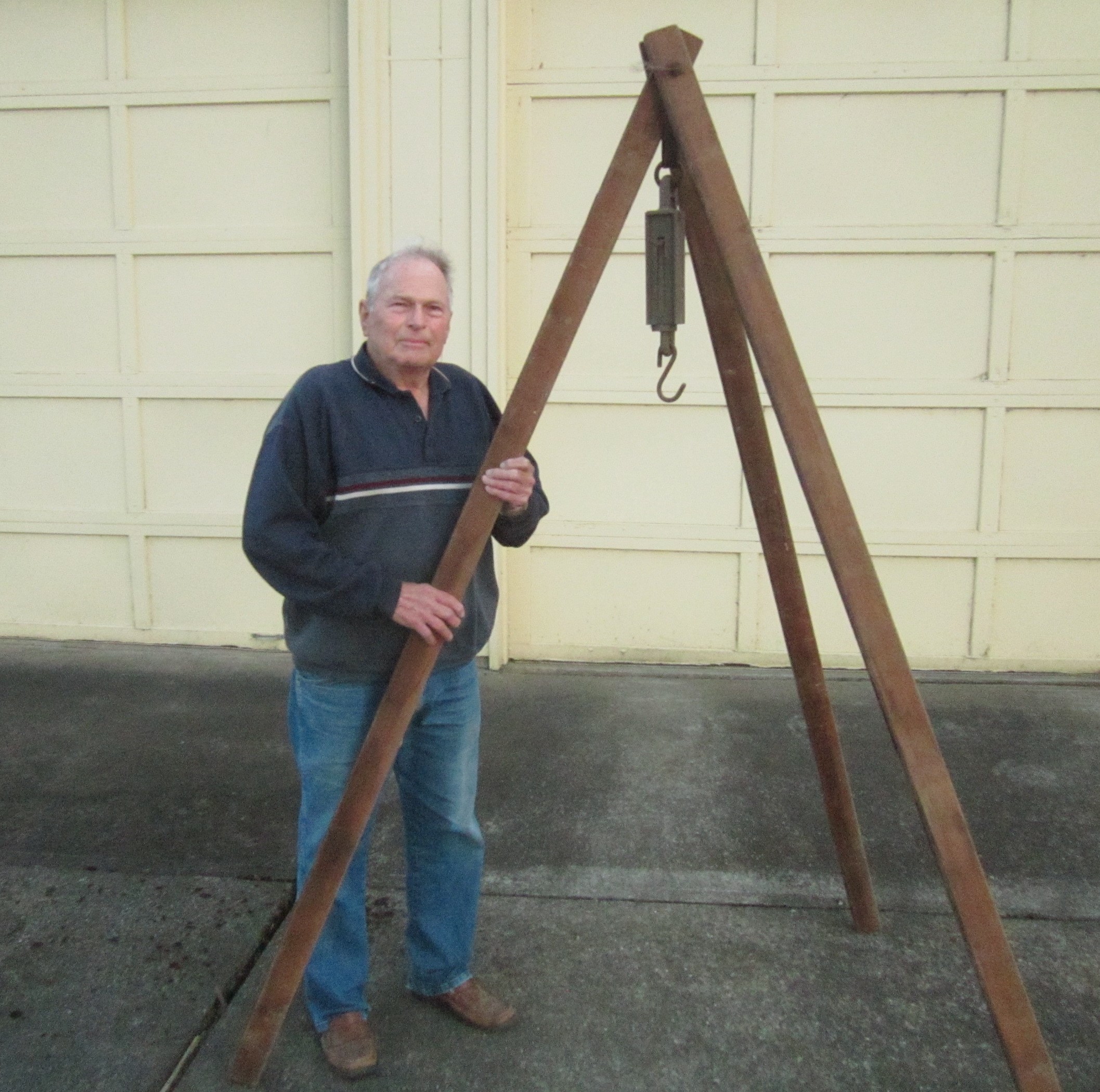North Plains History: Hops Now and Then
This is the first of many fun and interesting history articles we will be sharing written by local historian and 4th generation area resident Melvin Van Domelen. We sincerely thank Melvin for his wonderful historical accounts and for his passion for keeping our rich history alive today.
HOPS NOW AND THEN
By Melvin Van Domelen
Over the years there have been several crops grown by farmers in our local area that have all but disappeared, these being cannery peas, barley, flax and hops. We now do have a baseball team playing at Ron Tonkin field called the “Hops”. People wondered why this name was selected for the ball team. They had to reach way back in time to come up with that one.
I have some pictures of my Mother, who then was Pearl Corey, in a hop yard in 1909. This was an incentive to look into hop production here. My Mother is here, on the left, driving the cart and Tillie Schmitke is with her. The photo was taken at the Maxwell hop yard that was located just before Corey Road, taken off from Dairy Creek Road. This would be about 2 miles north of the Mountaindale corner. The 10 to 12 foot high posts that supported the vines show up here.  This photo (left), also taken at the Maxwell yard shows the girls decorated with hops everywhere. They are left to right: Retha Raffety, Pearl Corey, Wanda Raffety, Anna Fowles and Cora Willis. I had a chance to go over the picture with Retha while she was still living. Retha said that the hop vines did have a rough surface. But she pointed out that a lot of the protection was for when they went to a dance, their arms were not so tanned. I questioned that Anna looked out of place. Retha said “Oh, she was just visiting”.
This photo (left), also taken at the Maxwell yard shows the girls decorated with hops everywhere. They are left to right: Retha Raffety, Pearl Corey, Wanda Raffety, Anna Fowles and Cora Willis. I had a chance to go over the picture with Retha while she was still living. Retha said that the hop vines did have a rough surface. But she pointed out that a lot of the protection was for when they went to a dance, their arms were not so tanned. I questioned that Anna looked out of place. Retha said “Oh, she was just visiting”.
Elaine Gardener Olsen remembers the Maxwell hop yard and the hop drier there. She told of her brother Elmo being the person who would shout out “Wire down” when he lowered a line of vines for picking. In talking with Clyde Pothoff, I learned his favorite way of picking hops was to strip the vines with his fingers, something like a rake. Sometimes he would have to pick the leaves out. He told me his family was picking hops the day World War II ended. Clyde said that the picking season went on for two or three weeks.
The Willis hop yard was west of where Murphy Road starts the climb up to Pumpkin Ridge. On a fishing trip with my Father, he showed me the wood fired hop drier that was still down by Dairy Creek. It was just like a small barn with three levels of screened floors. There were planks that a person could walk on to stir the hops, that needed to be done often. Nearby was the cabin of a local moonshiner, Slim Willis. I read in a newspaper once that Slim had been busted several times for this activity. Dad pointed out the empty wine and whiskey bottles that Slim had used to fill the space where the cabin rafters sat on the walls. These bottles were plastered in this space with moss and mud, all around the cabin. It was a sight to see.
Elaine Olsen loaned me an old picture album that had a page of photos of the Sinclaire hop yard. This place was about one-half way between North Plains and Hillsboro on Glencoe Road. This prompted a visit with Steve Griffels who lives there today.  Steve said there had been hops grown on the Sinclaire farm from 1906 to 1945. This is a picture of the Sinclaire hop yard. The house in the background still stands there today, 2018. The vines in the front have been lowered for picking. The rows of hops in the rear are still up on the wires and poles. Steve told me the young hop vines had to be trained to grow around the string in the right direction or they wouldn’t climb up. The hop pickers were paid by the pounds produced. Mrs. Sinclaire kept a tally book for this. The best price Steve’s grandfather received for his dried and baled hops was $1.50 a pound. If that was the price the grower received, the pickers could not have been paid very much. Hops were soft and light, took a lot to make a pound. Some pickers camped in the Sinclaire woods.
Steve said there had been hops grown on the Sinclaire farm from 1906 to 1945. This is a picture of the Sinclaire hop yard. The house in the background still stands there today, 2018. The vines in the front have been lowered for picking. The rows of hops in the rear are still up on the wires and poles. Steve told me the young hop vines had to be trained to grow around the string in the right direction or they wouldn’t climb up. The hop pickers were paid by the pounds produced. Mrs. Sinclaire kept a tally book for this. The best price Steve’s grandfather received for his dried and baled hops was $1.50 a pound. If that was the price the grower received, the pickers could not have been paid very much. Hops were soft and light, took a lot to make a pound. Some pickers camped in the Sinclaire woods.
 In 1946 the Sinclaire's were drying hops for Steve’s Father who had a yard up on Pumpkin Ridge. A fire started that burned down the Sinclaire drier and one-half of the 1946 crop. Steve Griffels was kind enough to dig out the tri-pod and spring scales that had been used in the Sinclaire hop yard. They were up in the rafters of his garage and had not seen the light of day for forty years.
In 1946 the Sinclaire's were drying hops for Steve’s Father who had a yard up on Pumpkin Ridge. A fire started that burned down the Sinclaire drier and one-half of the 1946 crop. Steve Griffels was kind enough to dig out the tri-pod and spring scales that had been used in the Sinclaire hop yard. They were up in the rafters of his garage and had not seen the light of day for forty years.





 Twitter
Twitter